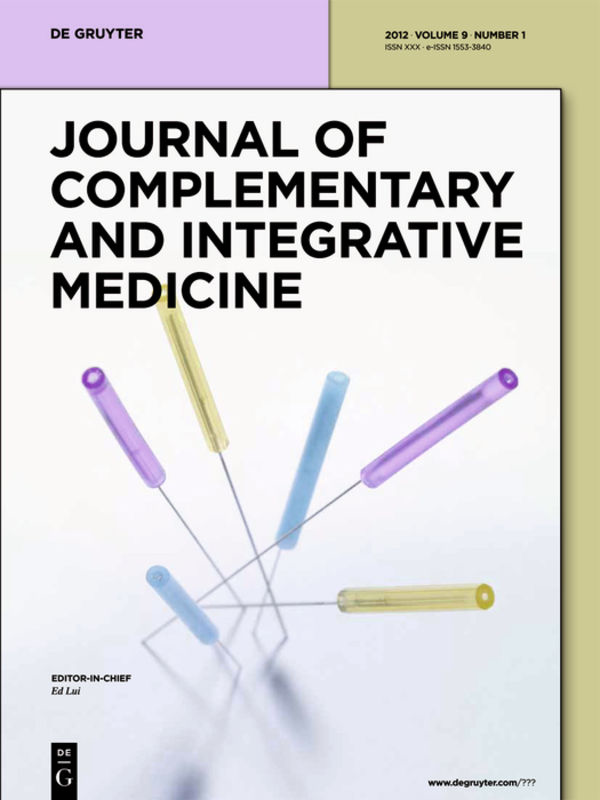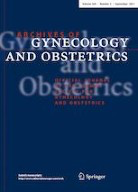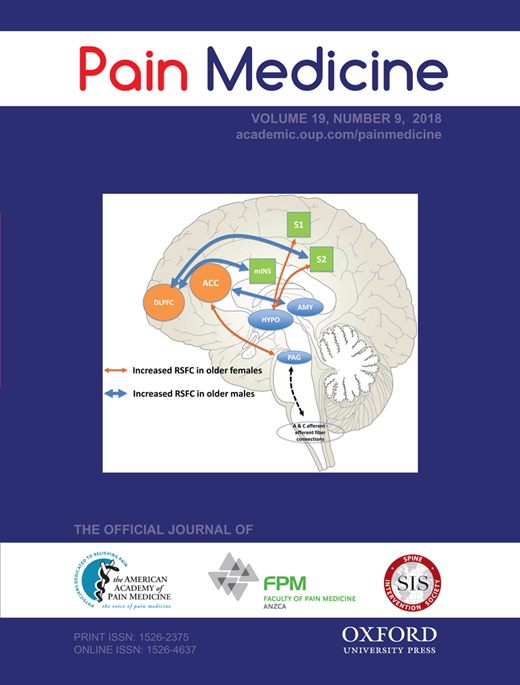Mefenamic Acid
How to submit an article:
- Registered users can submit any published journal article that has a unique DOI (Digital Object Identifier) name or link to Research Hub.
- For example, you can paste the full DOI link:
https://doi.org/10.1109/5.771073or just the DOI name:10.1109/5.771073into the field above and click submit. - The person who is first to submit a valid article to Research Hub will forever be credited for it, and every article submission earns you +6 Research Points.
Published research studies are articles that present the findings of original research that has undergone a peer-review process and has been made publicly available in scholarly journals, books or other media.

Comparing the Effect of Chamomile and Mefenamic Acid on Primary Dysmenorrhea Symptoms and Menstrual Bleeding: A Randomized Clinical Trial
2022 Aug 23 The Open Public Health Journal Shabani F, Narenji F, Vakilian K, Zareian MA, Bozorgi M, Bioos S, et al.
Randomised Controlled Trial Chamomile Mefenamic AcidChamomile sachets could be a viable alternate treatment for primary dysmenorrhea, as they've shown similar effects to mefenamic acid in reducing pain and bleeding.

Effect of fennel on primary dysmenorrhea: a systematic review and meta-analysis
2021 Jan 11 Journal of Complementary and Integrative Medicine Hadis Shahrahmani, Masumeh Ghazanfarpour, Nasim Shahrahmani, Fatemeh Abdi, Robert D. E. Sewell and Mahmoud Rafieian-Kopaei
Systematic Review Meta-AnalysisFennel intake decreased significantly the intensity of dysmenorrhea compared to placebo and was similar to non-steroidal anti-inflammatory drugs such as mefenamic acid.
The Effect of Ginger-chamomile Sachet with Honey on Primary Dysmenorrhea and Associated Symptoms: A Randomized, Double-Blind, Controlled Trial
2020 Sep 09 Current Women s Health Reviews Shabani F, Chabra A, Vakilian K, Bioos S, Bozorgi M, Ayati MH, et al.
Randomised Controlled Trial Ginger Chamomile HoneyThe use of ginger, chamomile, and honey significantly diminished the intensity of dysmenorrhea pain as compared to the use of mefenamic acid.
Evaluation of the Synergism of Medicinal Effects of Chamomile and Ginger on Pain and Symptoms of Primary Dysmenorrhea: A Randomized Controlled Trial
2020 Jan 30 Complementary Medicine journal Shabani F, Zareian MA
Randomised Controlled Trial Period Pain ChamomileThe combination of ginger and chamomile was as effective as mefenamic acid in managing dysmenorrhea pain and more efficient in reducing related symptoms.

Comparison of the effect of honey and mefenamic acid on the severity of pain in women with primary dysmenorrhea
2017 Jun 16 Archives of Gynecology and Obstetrics Amiri Farahani L, Hasanpoor-Azghdy SB, Kasraei H, Heidari T
Randomised Controlled Trial Mefenamic Acid HoneyHoney has been shown to provide similar pain relief to traditional medication mefenamic acid for women with primary dysmenorrhea, with fewer side effects.
Research insights are moderated by the Research Hub team and offer an at-a-glance overview of interesting research findings.

2022 The Open Public Health Journal
Chamomile sachets could be a viable alternate treatment for primary dysmenorrhea, as they've shown similar effects to mefenamic acid in reducing pain and bleeding.
Randomised Controlled Trial Chamomile
Comparing the Effect of Chamomile and Mefenamic Acid on Primary Dysmenorrhea Symptoms and Menstrual Bleeding: A Randomized Clinical Trial
Shabani F, Narenji F, Vakilian K, Zareian MA, Bozorgi M, Bioos S, et al.

2021 Journal of Complementary and Integrative Medicine
Fennel intake decreased significantly the intensity of dysmenorrhea compared to placebo and was similar to non-steroidal anti-inflammatory drugs such as mefenamic acid.
Systematic Review
Effect of fennel on primary dysmenorrhea: a systematic review and meta-analysis
Hadis Shahrahmani, Masumeh Ghazanfarpour, Nasim Shahrahmani, Fatemeh Abdi, Robert D. E. Sewell and Mahmoud Rafieian-Kopaei
2020 Current Women s Health Reviews
The use of ginger, chamomile, and honey significantly diminished the intensity of dysmenorrhea pain as compared to the use of mefenamic acid.
Randomised Controlled Trial Chamomile Ginger Honey
The Effect of Ginger-chamomile Sachet with Honey on Primary Dysmenorrhea and Associated Symptoms: A Randomized, Double-Blind, Controlled Trial
Shabani F, Chabra A, Vakilian K, Bioos S, Bozorgi M, Ayati MH, et al.
2020 Complementary Medicine journal
The combination of ginger and chamomile was as effective as mefenamic acid in managing dysmenorrhea pain and more efficient in reducing related symptoms.
Randomised Controlled Trial Chamomile Period Pain
Evaluation of the Synergism of Medicinal Effects of Chamomile and Ginger on Pain and Symptoms of Primary Dysmenorrhea: A Randomized Controlled Trial
Shabani F, Zareian MA

2017 Archives of Gynecology and Obstetrics
Honey has been shown to provide similar pain relief to traditional medication mefenamic acid for women with primary dysmenorrhea, with fewer side effects.
Randomised Controlled Trial Honey
Comparison of the effect of honey and mefenamic acid on the severity of pain in women with primary dysmenorrhea
Amiri Farahani L, Hasanpoor-Azghdy SB, Kasraei H, Heidari T
Review Articles
Review articles summarise and critically evaluate the current state of research on a specific topic or field by synthesising multiple primary research studies.

Effect of fennel on primary dysmenorrhea: a systematic review and meta-analysis
2021 Jan 11 Journal of Complementary and Integrative Medicine Hadis Shahrahmani, Masumeh Ghazanfarpour, Nasim Shahrahmani, Fatemeh Abdi, Robert D. E. Sewell and Mahmoud Rafieian-Kopaei
Systematic Review Meta-AnalysisFennel intake decreased significantly the intensity of dysmenorrhea compared to placebo and was similar to non-steroidal anti-inflammatory drugs such as mefenamic acid.

Efficacy of Oral Ginger (Zingiber officinale) for Dysmenorrhea: A Systematic Review and Meta-Analysis
2016 May 5 Evidence-Based Complementary and Alternative Medicine Chen X. Chen, Bruce Barrett, Kristine L. Kwekkeboom,
Systematic Review Review Article Mefenamic Acid Ginger Period PainOral ginger could be an effective treatment for menstrual pain in dysmenorrhea.

The Use of Ginger (Zingiber officinale) for the Treatment of Pain: A Systematic Review of Clinical Trials
2011 Dec 11 Pain Medicine Rohini Terry, PhD, Paul Posadzki, PhD, Leala K. Watson, BSc (Hons), et al.
Systematic Review Anti-Prostaglandin Anti-Inflammatory Mefenamic AcidGinger can reduce the direct activation of type 3 and 4 afferent nerve fibers by substances such as bradykinin and sensitization of afferent fibers by prostaglandins and cytokines.
Clinical Trials
Clinical trials are research studies that involve people and are conducted to evaluate the safety and efficacy of new treatments or interventions, such as drugs, medical devices, or behavioural therapies.

Comparing the Effect of Chamomile and Mefenamic Acid on Primary Dysmenorrhea Symptoms and Menstrual Bleeding: A Randomized Clinical Trial
2022 Aug 23 The Open Public Health Journal Shabani F, Narenji F, Vakilian K, Zareian MA, Bozorgi M, Bioos S, et al.
Randomised Controlled Trial Chamomile Mefenamic AcidChamomile sachets could be a viable alternate treatment for primary dysmenorrhea, as they've shown similar effects to mefenamic acid in reducing pain and bleeding.
The Effect of Ginger-chamomile Sachet with Honey on Primary Dysmenorrhea and Associated Symptoms: A Randomized, Double-Blind, Controlled Trial
2020 Sep 09 Current Women s Health Reviews Shabani F, Chabra A, Vakilian K, Bioos S, Bozorgi M, Ayati MH, et al.
Randomised Controlled Trial Ginger Chamomile HoneyThe use of ginger, chamomile, and honey significantly diminished the intensity of dysmenorrhea pain as compared to the use of mefenamic acid.
Evaluation of the Synergism of Medicinal Effects of Chamomile and Ginger on Pain and Symptoms of Primary Dysmenorrhea: A Randomized Controlled Trial
2020 Jan 30 Complementary Medicine journal Shabani F, Zareian MA
Randomised Controlled Trial Period Pain ChamomileThe combination of ginger and chamomile was as effective as mefenamic acid in managing dysmenorrhea pain and more efficient in reducing related symptoms.

Comparison of the effect of honey and mefenamic acid on the severity of pain in women with primary dysmenorrhea
2017 Jun 16 Archives of Gynecology and Obstetrics Amiri Farahani L, Hasanpoor-Azghdy SB, Kasraei H, Heidari T
Randomised Controlled Trial Mefenamic Acid HoneyHoney has been shown to provide similar pain relief to traditional medication mefenamic acid for women with primary dysmenorrhea, with fewer side effects.
Study Protocols
Published study protocols are detailed plans that outline the objectives, methodology, statistical analyses, and organisation of a research study that have been made publicly available for others to review and use as a reference.
Presentation Slides

Randomised Controlled Trial
Chamomile sachets could be a viable alternate treatment for primary dysmenorrhea, as they've shown similar effects to mefenamic acid in reducing pain and bleeding.
Shabani F, Narenji F, Vakilian K, Zareian MA, Bozorgi M, Bioos S, Nejatbakhsh F

Systematic Review
Fennel intake decreased significantly the intensity of dysmenorrhea compared to placebo and was similar to non-steroidal anti-inflammatory drugs such as mefenamic acid.
Hadis Shahrahmani, Masumeh Ghazanfarpour, Nasim Shahrahmani, Fatemeh Abdi, Robert D. E. Sewell and Mahmoud Rafieian-Kopaei

Randomised Controlled Trial
The use of ginger, chamomile, and honey significantly diminished the intensity of dysmenorrhea pain as compared to the use of mefenamic acid.
Shabani F, Chabra A, Vakilian K, Bioos S, Bozorgi M, Ayati MH, Nejatbakhsh F

Randomised Controlled Trial
The combination of ginger and chamomile was as effective as mefenamic acid in managing dysmenorrhea pain and more efficient in reducing related symptoms.
Shabani F, Zareian MA

Randomised Controlled Trial
Honey has been shown to provide similar pain relief to traditional medication mefenamic acid for women with primary dysmenorrhea, with fewer side effects.
Amiri Farahani L, Hasanpoor-Azghdy SB, Kasraei H, Heidari T

Systematic Review
Oral ginger could be an effective treatment for menstrual pain in dysmenorrhea.
Chen X. Chen, Bruce Barrett, Kristine L. Kwekkeboom,

Systematic Review
Ginger can reduce the direct activation of type 3 and 4 afferent nerve fibers by substances such as bradykinin and sensitization of afferent fibers by prostaglandins and cytokines.
Rohini Terry, PhD, Paul Posadzki, PhD, Leala K. Watson, BSc (Hons), Edzard Ernst, MD, PhD
Executive Summary
Write an executive summary in the form of a blog article on the topic of "Research into Chinese medicine treatment for Mefenamic Acid" summarising the research below and using language that can be easily understood by patients and avoiding medical jargon using a professional and caring tone of voice.
Write an executive summary in the form of a blog article on the topic of "Researched Chinese medicine treatments for Mefenamic Acid" summarising the research below in an objective and easy to understand way, and using language that can be easily understood by patients. Group the article into Chinese medicine treatments first, followed by nutrition and other treatments. Avoid using medical jargon and use a professional and caring tone of voice.
Write me a concise but easy to understand executive summary on the topic of "Chinese medicine treatments for Mefenamic Acid" based on the following research that I will give you. Your summary should be 2 paragraphs long in Australian English spelling and include references to the studies.
A Randomised Controlled Trial published in 2022 in the journal The Open Public Health Journal found that Chamomile sachets could be a viable alternate treatment for primary dysmenorrhea, as they've shown similar effects to mefenamic acid in reducing pain and bleeding. In the methodology of this study, the researchers took 200 female students diagnosed with primary dysmenorrhea and divided them randomly into two groups. One group was given mefenamic acid and the other group was administered chamomile. The intensity of pain, related symptoms, and bleeding were assessed using various measurement scales. Evaluating the results, both chamomile and mefenamic acid made a noticeable impact in decreasing the intensity of pain and bleeding. However, it was found that chamomile displayed a greater effectiveness in reducing the symptoms of primary dysmenorrhea, presenting it as a promising substitute treatment avenue.
A Systematic Review published in 2021 in the journal Journal of Complementary and Integrative Medicine found that Fennel intake decreased significantly the intensity of dysmenorrhea compared to placebo and was similar to non-steroidal anti-inflammatory drugs such as mefenamic acid. Meta-analysis of these trials showed that F. vulgare intake decreased significantly the intensity of dysmenorrhea compared to the placebo. However, the effect of Mefenamic acid with F. vulgare was not different from each other. The F. vulgare alleviates dysmenorrhea. Regarding the same effect of F. vulgare with NSAIDs, it is highly recommend to the women suffered from dysmenorrhea specifically the ones who have high tendency toward herbal medicine.
A Randomised Controlled Trial published in 2020 in the journal Current Women s Health Reviews found that The use of ginger, chamomile, and honey significantly diminished the intensity of dysmenorrhea pain as compared to the use of mefenamic acid. Methodology: The research involved 200 female students from Arak universities, suffering from primary dysmenorrhea. These participants were randomly divided into two groups. Initially, one cycle without any intervention was evaluated for all students. Following this, group A was administered 250mg of mefenamic acid while group B received a combination of 1000mg ginger, 5000mg chamomile along with a teaspoonful of honey. This regimen was followed for two days prior and for the first three days of menstruation, administered three times daily and was carried out over two consecutive cycles. To measure the pain severity, associated symptoms of dysmenorrhea and bleeding, tools such as a visual analogue scale, Andersch-Milsom Verbal Scale, and Higham chart were used. Discussion of Results: Following the intervention, the pain intensity experienced by the group treated with ginger, chamomile, and honey was found to decrease significantly when compared to the group that was administered mefenamic acid.
A Randomised Controlled Trial published in 2020 in the journal Complementary Medicine journal found that The combination of ginger and chamomile was as effective as mefenamic acid in managing dysmenorrhea pain and more efficient in reducing related symptoms. The methodology used was a randomized controlled clinical trial involving 400 female students from Arak University. Four groups of participants were created, each with 100 students. The treatments given to these groups were ginger with honey, chamomile with honey, a mix of ginger and chamomile with honey, and mefenamic acid. The participants consumed their respective treatments three times daily, starting from two days before menstruation and continuing into the first three days of the cycle, for two consecutive periods. The pain intensity, related symptoms, and bleeding were evaluated over the first three days of each cycle, both one month before treatment and two months after it. The study found that all four treatment options significantly decreased pain severity, painful days, low back pain, analgesic consumption, total symptom score, and bleeding. Again the blend of ginger and chamomile was notably better than the other treatments in lowering the total symptom score. Meanwhile, mefenamic acid was particularly effective at reducing bleeding loss. Despite these differences, there was no significant variation among the groups outside of total symptom score and bleeding loss.
A Randomised Controlled Trial published in 2017 in the journal Archives of Gynecology and Obstetrics found that Honey has been shown to provide similar pain relief to traditional medication mefenamic acid for women with primary dysmenorrhea, with fewer side effects. In this randomized crossover clinical trial, 56 female university students with primary dysmenorrhea were split into two groups and were either given honey or mefenamic acid during their 'first treatment period.' For the 'second treatment period,' the groups were switched and the subjects were given the alternate treatment. The participants' pain levels were recorded during the first three days of menstruation. The results showed that there was no significant difference between the most severe level of pain experienced in the two groups during both months of the treatment period. In effect, both honey and mefenamic acid provided similar levels of pain relief to women with primary dysmenorrhea. Notably, honey is recommended due to its lower side effects and pharmacological complications compared to mefenamic acid. No future research trials were mentioned.
A Systematic Review published in 2016 in the journal Evidence-Based Complementary and Alternative Medicine found that Oral ginger could be an effective treatment for menstrual pain in dysmenorrhea. Ginger appeared more effective for reducing pain severity than placebo. The weighted mean difference on a 10 cm visual analogue scale was 1.55 cm (favoring ginger). No significant difference was found between ginger and mefenamic acid (an NSAID). The standardized mean difference was 0 (95% CI -0.40 to 0.41). Available data suggest that oral ginger could be an effective treatment for menstrual pain in dysmenorrhea. Findings, however, need to be interpreted with caution because of the small number of studies, poor methodological quality of the studies, and high heterogeneity across trials. The review highlights the need for future trials with high methodological quality.
A Systematic Review published in 2011 in the journal Pain Medicine found that Ginger can reduce the direct activation of type 3 and 4 afferent nerve fibers by substances such as bradykinin and sensitization of afferent fibers by prostaglandins and cytokines. Due to a paucity of well-conducted trials, evidence of the efficacy of Z. officinale to treat pain remains insufficient. However, the available data provide tentative support for the anti-inflammatory role of Z. officinale constituents, which may reduce the subjective experience of pain in some conditions such as osteoarthritis. Further rigorous trials therefore seem to be warranted.
Moderation Tools
Topic
Sign In
Users not signed in are limited to viewing the 5 most recent items of content.
the principal active ingredient for these effects being gingerols, which has anti-prostaglandin effects — 31 Aug 2021